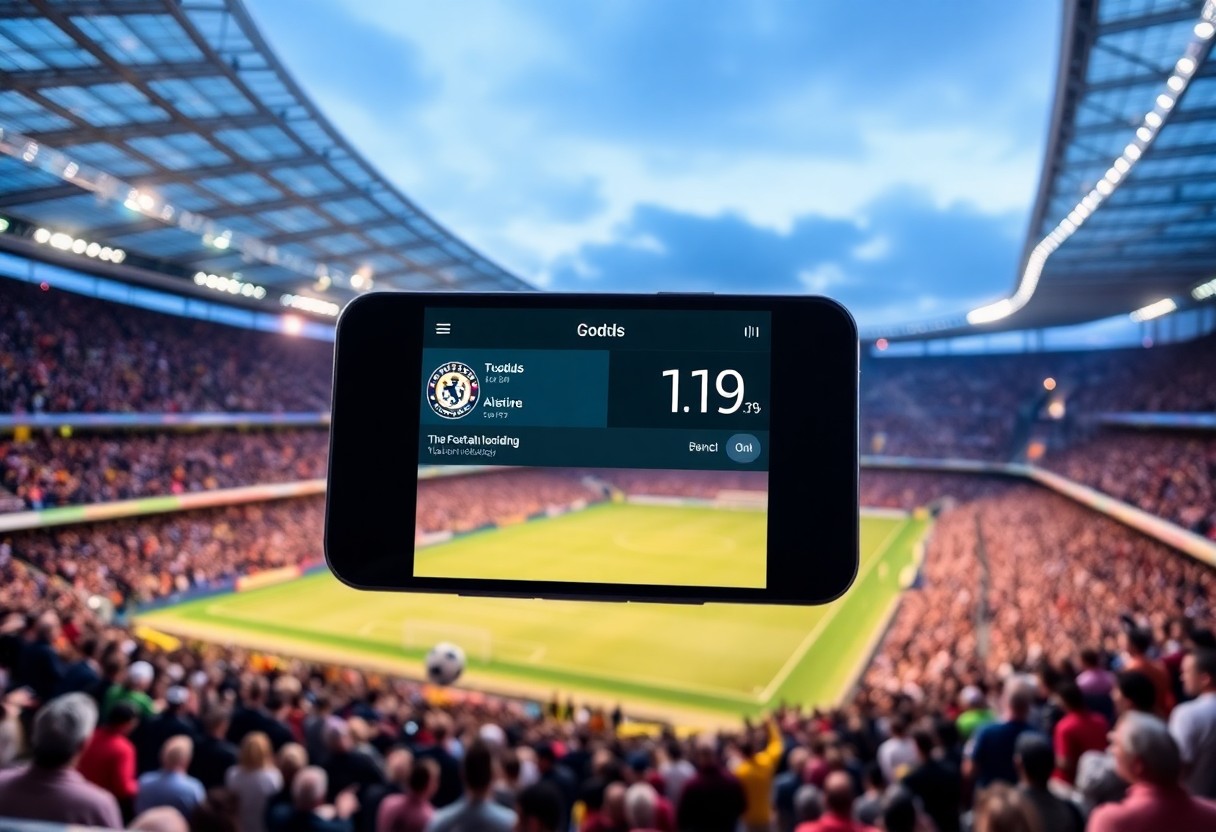Betting effectively in live scenarios requires a solid approach to bankroll management to safeguard your funds and enhance your overall experience. By establishing strict budget limits and employing strategies such as percentage betting and dynamic adjustments, you can minimize losses and capitalize on winning opportunities. Staying focused on value bets while avoiding impulsive wagers will help maintain a steady growth trajectory. With these smart strategies, you can enjoy the excitement of live betting without compromising your financial stability.
Understanding Bankroll Management
Effective bankroll management is the backbone of successful live betting. It encompasses not just how much money is available for wagering but also strategies for allocating funds wisely across different events, taking into account individual risk tolerance and betting types. A well-managed bankroll can sustain a bettor through inevitable ups and downs while maximizing profit potential over time.
Defining Your Bankroll
Your bankroll consists of the total amount set aside specifically for betting activities. This should be considered separate from everyday finances or savings. By clearly defining your bankroll, you ensure that you engage in betting activities without financial distress, creating a clear boundary that protects your personal finances from the inherent risks of gambling.
Importance of a Bankroll Strategy
A bankroll strategy eliminates emotional decision-making and enhances discipline in betting practices. By sticking to predetermined betting limits, bettors can mitigate losses and stay in the game longer. This systematic approach often leads to better outcomes since it encourages a consistent method rather than erratic betting. For instance, if you allocate 5% of your bankroll per bet, a $1,000 bankroll allows for individual wagers of $50. This keeps you in the game while harnessing the potential for profit without risking your entire bankroll in one go.
Establishing Betting Limits
Setting clear betting limits helps maintain control over your wagering behavior and minimizes the risk of significant financial loss. A well-defined structure for your betting will lead to a more systematic approach, ultimately fostering a disciplined live betting experience. By establishing specific thresholds, you can manage your bankroll more effectively and avoid impulsive decisions that may jeopardize your financial security.
Setting Maximum and Minimum Bets
Determining your maximum and minimum bets is crucial for creating a balanced betting strategy. A maximum bet should reflect a small fraction of your overall bankroll, typically not more than 5%, while the minimum bet allows for diverse coverage across multiple events. Finding the right balance ensures you can exploit various betting opportunities without overstretching your finances.
Daily and Weekly Limits
Implementing daily and weekly limits can significantly enhance your bankroll management strategy. By setting a cap on the amount you are willing to wager each day or week, you can withstand potential losing streaks without depleting your entire bankroll. Allocating a set amount for each time frame protects against emotional betting and enforces a disciplined approach.
For daily and weekly limits, consider a fixed percentage of your bankroll; for example, betting no more than 10% of your total bankroll per week. This strategy allows flexibility while maintaining a safeguard against excessive losses. Additionally, regular assessments of your betting performance alongside these limits can help you make necessary adjustments based on your betting success and evolving budget. This structured approach promotes long-term sustainability in live betting, encouraging smarter decisions and a more enjoyable experience.
Analyzing Odds and Value Bets
Understanding Betting Odds
Betting odds reflect the probability of an outcome occurring and dictate the potential return on your investment. Odds can be presented in decimal, fractional, or moneyline formats, each conveying the same underlying information. For example, decimal odds of 2.00 imply a 50% chance of winning. Grasping these odds is important for making informed live betting decisions, as they help evaluate whether a wager offers sufficient potential payout relative to the perceived risk.
Identifying Value in Live Betting
Finding value in live betting requires assessing whether the odds offered by the bookmaker truly reflect the actual probabilities of an event. This entails comparing in-game performance and situational factors against the posted odds to recognize discrepancies. For instance, if a team is outperforming expectations, but the odds remain unchanged, this creates an opportunity for a value bet that can yield higher returns than the implied risk suggests.
To effectively identify value, analyze real-time data such as player statistics, team form, and momentum shifts during the match. For example, if a basketball team struggles in the first half but is known for strong second-half performance, live betting on them at favorable odds can present significant value. Staying informed about injury updates and tactical changes also enhances your ability to spot these opportunities in fluctuating odds, allowing for more strategic betting decisions that capitalize on bookmakers’ oversight.
Utilizing Betting Strategies
Implementing structured betting strategies can significantly enhance your chances of success in live betting. Different methodologies, such as the Martingale System and the Kelly Criterion, provide frameworks for managing your bankroll effectively and controlling risk exposure. Each strategy offers a unique approach that caters to varying risk appetites and betting scenarios, helping bettors navigate the unpredictable nature of live sporting events.
The Martingale System
The Martingale System revolves around doubling your bet after each loss, aiming to recover previous losses with a single win. This strategy relies on the assumption that bettors will eventually encounter a winning bet, thus theoretically covering all previous losses. While appealing for its simplicity, it poses a significant risk, particularly during extended losing streaks, potentially leading to substantial financial strain.
The Kelly Criterion
The Kelly Criterion provides a mathematical approach to bankroll management, focusing on maximizing long-term capital growth. By calculating the optimal bet size based on your perceived edge over the bookmaker, it minimizes the risk of ruin. The formula considers both your bankroll and the odds offered, allowing bettors to invest only a fraction of their funds when the perceived probability of winning is lower than implied by the odds.
To apply the Kelly Criterion effectively, first determine your edge in a given bet, which is the difference between your estimated probability of winning and the bookmaker’s implied probability. For example, if you believe there is a 60% chance of an outcome happening, but the odds suggest only a 50% chance, your edge is 10%. Using the Kelly formula, you would bet a percentage of your bankroll proportional to this edge. This method aims to strike a balance between aggressive betting for growth and safeguarding against significant losses, allowing for sustained engagement in the betting market.
Tracking Your Betting Performance
Monitoring betting performance is imperative for long-term success in live betting. Keeping detailed records of each wager—such as stake amount, type of bet, odds, and outcome—provides insight into your overall strategy. Identifying patterns in wins and losses aids in refining your approach and maximizing potential gains. Accumulating this data not only reveals your strengths but also highlights areas needing improvement, ultimately promoting more informed decision-making.
Keeping Accurate Records
Maintaining accurate records requires diligence and consistency. Utilize spreadsheets or betting apps to log information efficiently, capturing details like the event, date, bet type, and the rationale behind each wager. This organization facilitates easy review and analysis, allowing you to track your bankroll progression over time. A systematic approach underscores significant trends and aids in developing personalized betting strategies.
Analyzing Outcomes for Improvement
To enhance your betting strategy, focus on analyzing your outcomes in depth. Review the types of bets that yield the highest return and scrutinize those with repeated losses. Understanding the circumstances surrounding winning and losing bets provides context—whether it’s timing, odds, or event types. This analysis can pinpoint effective strategies and expose flaws in your current approach, guiding adjustments for better results in future wagers.
In-depth analysis offers the chance to identify specific betting environments where you excel. For instance, a closer look at past performances in live football matches might reveal a pattern of success when betting on total goals over a certain threshold. Conversely, you may find trends indicating poor results in specific leagues or matches, suggesting a need to adjust focus or improve your research methods. By establishing clear metrics for success, such as a 60% win rate in specific types of bets, you can set realistic goals and continually refine your strategy based on quantifiable data.
Staying Disciplined While Betting
Discipline encapsulates the essence of successful live betting. Establishing a set of rules for your betting behavior can mitigate impulsive decisions that may lead to financial losses. Consistently sticking to your bankroll limits and betting strategy will help maintain a strategic approach, allowing you to navigate both winning and losing streaks without deviating from your plan.
Emotional Control
Emotional control can be the difference between success and failure in live betting. Staying rational in the face of wins or losses prevents erratic decision-making and impulsive bets. Keeping emotions in check helps in objectively analyzing each game, ensuring that bets are based on logic rather than momentary feelings.
Avoiding Chasing Losses
Chasing losses often leads to deeper financial pitfalls. This behavior involves increasing bet sizes in an attempt to recover losses, which can quickly spiral out of control. Instead of attempting to win back lost amounts, focus on sticking to your betting plan, regardless of recent performance.
Many bettors have fallen into the trap of chasing losses, believing that a bigger bet will compensate for earlier mistakes. This concept often leads to betting patterns that are unsustainable. For example, a bettor who starts with a $100 bet and loses might place a $200 bet to recoup the loss, only to find themselves down $300 if that bet also fails. Implementing a strict limit and understanding that losses are part of the process can preserve your bankroll and maintain a long-term perspective on betting success.
Conclusion
Considering all points, effectively managing your bankroll in live betting requires a disciplined approach complemented by smart strategies. Set clear limits, utilize betting units to manage risk, and maintain an objective perspective on your bets. By focusing on value and continuously assessing your strategies based on real-time information, you can enhance your decision-making process. Emphasizing patience and self-control will further safeguard your bankroll, leading to a more sustainable and profitable betting experience.
FAQ
Q: What are some effective strategies for setting a bankroll for live betting?
A: Determine your total budget for betting, then divide it into smaller units that you can afford to lose in a single session. This helps manage risk and enables you to maintain discipline throughout multiple bets. It’s advisable to keep your bet sizes consistent, typically between 1% to 5% of your total bankroll per wager.
Q: How can I adjust my betting strategy during live events?
A: Monitor the live action closely and make adjustments based on game dynamics. If a team shows unexpected performance, consider altering your bet size or shifting your strategy from pre-game bets to in-game options. Assess both teams’ current form, injuries, and statistical data to make informed decisions in real-time.
Q: What should I consider when choosing a betting market for live betting?
A: Focus on markets that you understand well, such as point spreads or totals. Evaluate the liquidity and odds offered by your sportsbook, as these can fluctuate quickly during events. Select markets with statistically significant data to support your bets, and be mindful of the time constraints when placing wagers in live betting scenarios.




